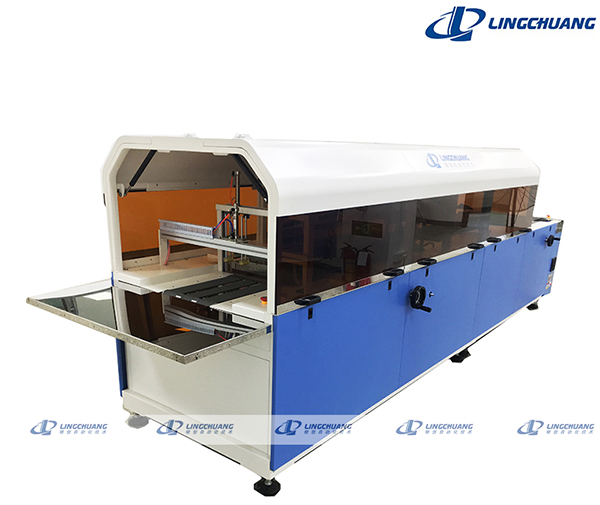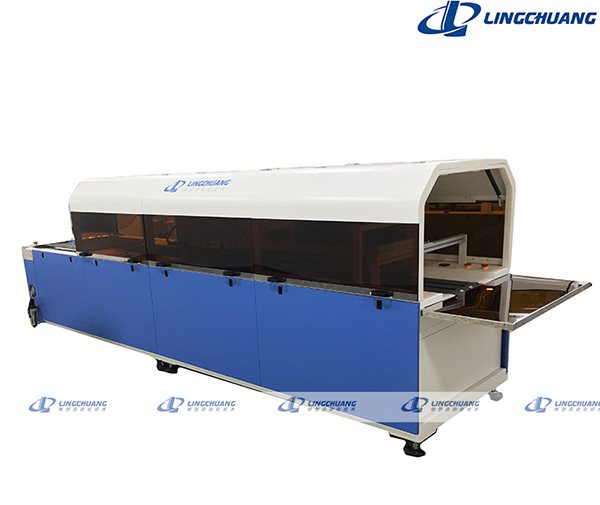How to use the garment ironing machine to iron different clothing materials? There are also differences in ironing methods due to differences in fiber materials, fabric structures, and garment structures. The general ironing principles for different materials are described here. According to different fiber materials, the ironing and shaping machine uses different functions:
1. Cotton fabric
The ironing effect of the cotton fabric is relatively easy to achieve, but it does not last for a long time during the wearing process, and it is easily deformed again after being subjected to an external force. Therefore, cotton fabrics need to be ironed frequently. When ironing, it can be directly ironed directly. At this time, ironing can make the surface smooth and have certain brightness. It can also be sprayed with water to make the garment soft and soft. For the blended material of cotton and other fibers, the ironing temperature should be corresponding. Reduce, especially spandex core-spun yarn fabrics such as elastic denim, etc., use steam to low temperature pressing, otherwise it is easy to appear in some parts of the phenomenon of foaming.
2. Hemp fabric
Hemp fabrics are also easier to iron than cotton fabrics, but the pleats should not be stressed, so as to avoid brittle breakage; hemp fabrics have poor washability and need to be ironed frequently. However, in the past few years, there have been more linen fabrics, some have less amount of hemp, and some have no hemp at all. They should be treated separately.
3. Silk fabric
Silk fabrics are exquisite, light and soft, and should not be ironed on the front of the fabric. Ironing can make it flat, but it is not easy to form pleats; tussah silk fabric can not be wet, otherwise water spots will appear. It should be noted that silk fabrics are not necessarily all silk fabrics, and there are a large number of chemical fiber filament fabrics in silk fabrics, which should be treated differently.
4. Wool fabric
The wool fabric has a soft luster and has scales on the surface of the fabric. It is not suitable to directly iron the front side of the fabric to avoid the phenomenon of "Aurora". Ironing in the case of a wet cloth can soften the gloss of the garment. The ironing effect can be kept unchanged when the clothes are dry. Once washed, it needs to be re-ironed to make the clothes flat.
5. Viscose fabric
Ironing is easier, but it is not advisable to pull the clothing material when ironing to prevent deformation.
6. Polyester fabric
Pay attention to the ironing shape, on the one hand, the need for one-step deformation, on the other hand, it is necessary to change the temperature higher than before, which will affect the effect. When taking it, it is generally not necessary to iron or only slightly iron. At the same time, it is necessary to prevent heat shrinkage and aurora production.
7. Nylon fabric
Nylon fabric can be flattened with a little ironing, but it is not easy to maintain. It is easier to wrinkle when taken, and it is difficult to form seams and pleats.
8. Acrylic fabric
Since the acrylic fabric is fluffy, the pressure should be suitably small, similar to wool fabric.
9. Vinyl fabric
Dry hot, otherwise it will cause serious contraction.
10. Polypropylene, polyvinyl chloride, spandex fabric
Generally, it is not necessary to iron. If ironing is required, the ironing temperature must be strictly controlled.
11. Blended fabric
The ironing method of each blended fabric depends on the blended fiber type and the blending ratio. Generally, the proportion of the blended fabric is large, and the treatment standard is biased on who.
The above is the answer to the instructions of how the various garments of the garment ironing and ironing machine manufacturers should be ironed. If there is any problem, you can consult the Xiaobian online.




























